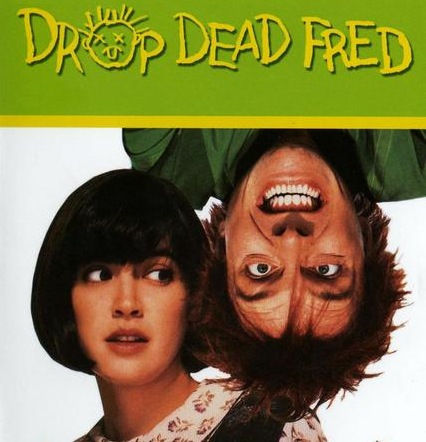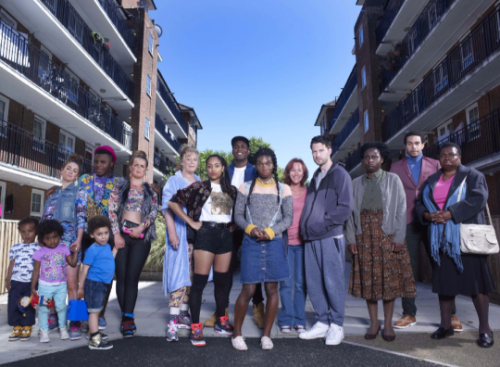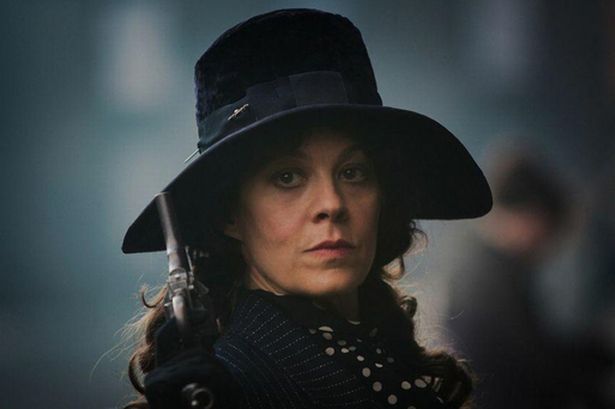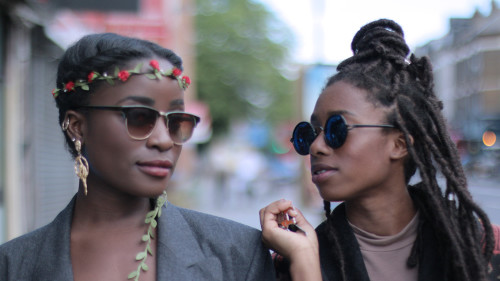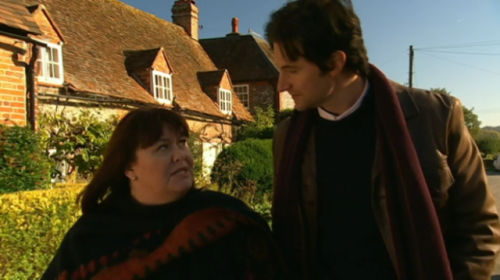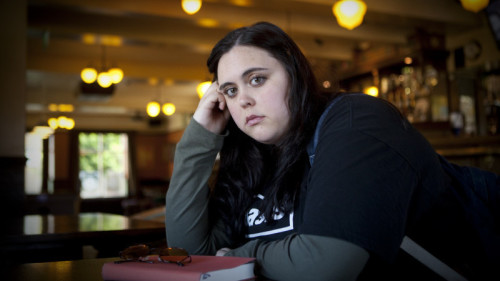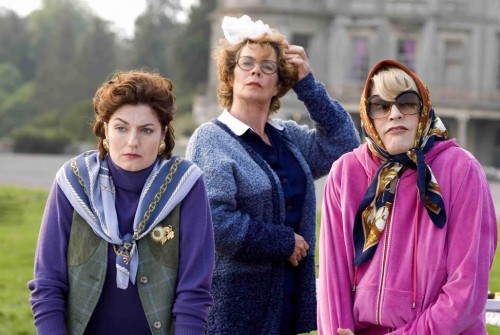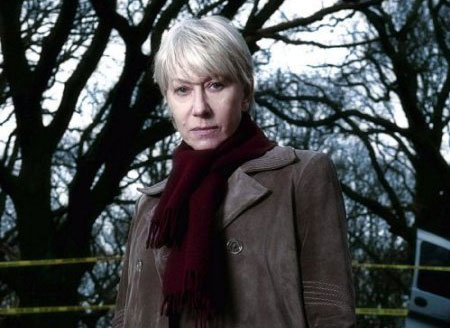For the uninitiated, Rik Mayall is what happens when you take a classic English punk from the Sex Pistols era, and tool him up with the comic attitude of Bill Hicks and the comic style of Jim Carrey. Though part of a wave of “alternative comedy,” it was always Mayall who had the Hicksian snarl and the burning, Goatboy-style obsession with his own abjection. A major reason why Hicks found overnight comic stardom in the UK, after years struggling to gain acceptance in the USA, is because Rik Mayall had cultivated the British public’s taste for ferocious comedy anarchism. Mayall and Hicks are products of convergent evolution: unrelated creatures evolving resemblance from environmental similarities. Specifically: Rik Mayall and Bill Hicks were politely raised, intelligent, articulate, straight, white boys of above average height and looks, who spontaneously combusted into epic, punk rock guiltsplosions of belligerent basic decency and self-satirizing privilege, while feeling kinda bad that their raging libidos tempted them to objectify women. Add a feverish energy homaging his beloved Wile E. Coyote, that can only be compared to a punk Jim Carrey, and you’ve got the slapHicks, Rik Mayall. In 1991’s Drop Dead Fred, Mayall starred in a sharp deconstruction of the early-onset socialization of girls to reject their own anarchic impulses – one that films like Seth MacFarlane’s Ted have recycled into a far duller exploration of a man’s choice between his loudly celebrated childish impulses and his Mommy-lover-lady. In Drop Dead Fred the heroine’s own anarchic impulses, comic sense and anger at her mother have been more acceptably regendered as Mayall’s “Fred,” while she herself can be squeezed into an icon of servile ladylike behaviour.
Drop Dead Fred opens with Marsha Mason’s patriarchal mother reading a fairy-tale to the young Elizabeth, telling her that the princess received her happy ending “because she was a good little girl. If she had been naughty, the prince would have run away.” Young Elizabeth considers for a moment, then fires back “what a pile of shit,” healthily immune to social pressures to value herself by a man. Flash forward to adulthood, and Phoebe Cates’ Elizabeth has become pressured into the ideal Mommy-lover-lady of patriarchy, wearing demure floral gowns and fussing over her paternalist, condescending husband’s clothing and shaving. Gradually, we learn that Elizabeth’s mother had blamed her anarchic, destructive behavior in childhood for making her distant father run away, like the prince of the fairy tale who abandons naughty princesses. With her imaginary friend, Drop Dead Fred, being sealed away in a jack-in-the-box on the very day that her father departs, and with her father sharing Fred’s English accent in an otherwise American cast, the film wears its Daddy issues on its sleeve.
Drop Dead Fred is a Dream Father who is a radically present, anti-materialist, anti-provider, implying criticism of the traditional role of fathers, in the same way that the film challenges the traditional conditioning of girls to passive and submissive “goodness.” By standing up to Elizabeth’s mother in all the ways her own father fails to, Fred models self-assertion to her, rather than grooming her to self-sacrificing compliance. There is a deeper truth here: by setting high expectations of men and offering models of liberated behavior that can be imitated, a strong male role model can be a young girl’s best mental defense against patriarchal conditioning. In the absence of one, Elizabeth has created an imaginary friend who models her mental resistance, gendering her own inner anarchic impulses as male.
The adult Elizabeth must finally learn that the sealing away of Drop Dead Fred represented the sealing up of the part of herself that society had coded as masculine: namely, her assertiveness, her anti-conformity and her anarchic disdain for social norms. When her unfaithful husband boasts that he has Elizabeth under control, he feeds her green pills to kill her “imaginary friend” and force her back into tranquilized Mommy-lover-lady perfection, pills that represent rewarded conformity as much as the blue pills of The Matrix. While its patriarchal mother is a figure to be resisted, Drop Dead Fred also showcases positive female friendship and solidarity between Phoebe Cates’ Elizabeth and Carrie Fisher’s Janie. Janie unquestioningly accepts Elizabeth’s accounts of Fred and seeks to fight him on her behalf, curtly telling her older lover that this is “girl stuff.” Yes, apart from the imaginary Fred, all the men of this film are the stuffy, unimaginative equivalent to mainstream cinema’s Mommy-lover-ladies, while battling your anarchic imaginary friend is “girl stuff.” I would say that Drop Dead Fred is “Ted for girls” or “Fight Club for kids,” but it predates both.
Rarely has a showbiz marriage been more divinely inspired than Drop Dead Fred‘s between Elizabeth Livingston’s story of imaginary, anarchic male role models, and Rik Mayall’s self-deprecating punk. A man whose entire career was founded on savage interrogations of toxic masculinity, Mayall was offered a chance to reimagine himself through Elizabeth’s perspective, as a being whose natural anarchism was a liberating force for women. It is impossible to overemphasize how intensely Rik Mayall’s self-authored (or any male-authored) image of Rik Mayall lacked all sense that Mayall’s characters could be good for women. He blossoms visibly in Drop Dead Fred. Watch his interactions with the young Elizabeth. Yes, it’s manic Mayall, but see how wholly his energy is focussed on responding enthusiastically to whatever the little girl gives him? See how visibly thrilled and emboldened that little girl is by his attentive encouragement? See how Phoebe Cates reveals entirely unexpected comic talent as a mime, when wrestling an invisible Fred, and even the brilliantly brassy Carrie Fisher gives her wildest comic performance in a knock-down, drag-out imaginary fight with exactly the physical humor that women are routinely, subtly discouraged from? Rik Mayall was finally cast as a catalyst for female self-expression, so he catalyzed every actress in the film to gleeful unruliness.
Anarchy is a state of mind, not a material state, as many Marxists learn when attempting to enforce their materialist philosophies of antimaterialism (so much devastating humanitarian tragedy that could have been avoided if communist regimes carefully studied “Rik the accidentally authoritarian anarchist snot” from Mayall’s sitcom The Young Ones and cultivated a sense of thunderingly obvious irony). The point is not to sink a houseboat, but to value the adventure over the boat. Not to chop a little girl’s hair, but to teach her that it is irrelevant to her worth. Note also that, while playfully childish sexuality is part of his persona, Fred never sexualizes Phoebe Cates’ Elizabeth. Not ironically. Not jokingly-not-jokingly, to subtly put her in her place. He is her anarchist Dream Father, and he Dream Fathers her with wholehearted focus on her personhood and self-assertion. Rarely, if ever, has a larger-than-life comedian given a performance more generously dedicated to the actual purpose of his role. If you can see Rik freaking Mayall, decked out in hideous fashion and wildly clashing hair that is as classically punk as it is childish, earnestly mentoring a little girl in the joys of antimaterialist, anarcho-punk self-actualization without being moved, then surely you have a heart of stone. Far from selling out, Rik Mayall’s Hollywood family film was the most truly punk statement he ever made.
[youtube_sc url=”https://www.youtube.com/watch?v=kgh27gCgiQw”]
Drop Dead Fred finally justifies the endlessly abused loyalty of women like me to male comedians like Rik Mayall, Richard Pryor, Bill Hicks, Monty Python, Trey Parker or the Farrelly Brothers. Like the character of Drop Dead Fred himself, each combines an off-putting, abrasive surface sexism with more profound lapses in empathy for female perspectives, but their comic purpose remains egalitarian mental liberation. As women, we are conditioned to express admiration for such men by rewarding them sexually, rather than by identifying, imitating and integrating the qualities we are actually drawn to. As little Elizabeth might say, what a pile of shit.
Brigit McCone loves her some comic anarchy. She writes and directs short films and radio dramas. Her hobbies include doodling and clicking this link
